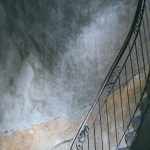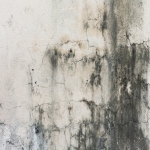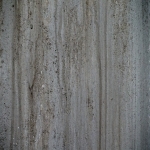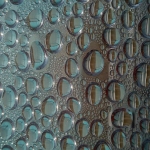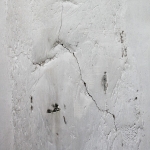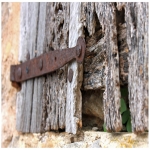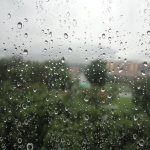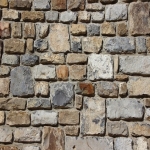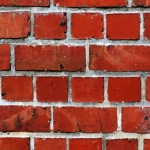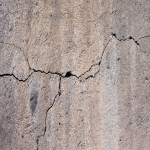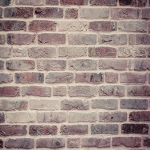We are Damp Proofing Experts that work nationwide across the UK.
We are Damp Proofing Experts that work nationwide across the UK.

Many homes, properties and buildings across the UK face issues when it comes to damp which can be difficult to handle and control.
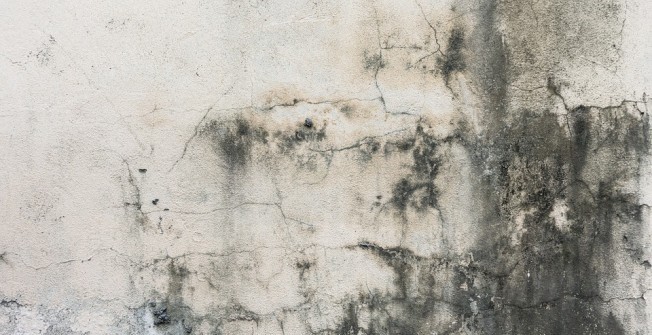
As a specialist company, we help resolve these damp problems in a number of ways depending upon the ways in which it has appeared in your home.
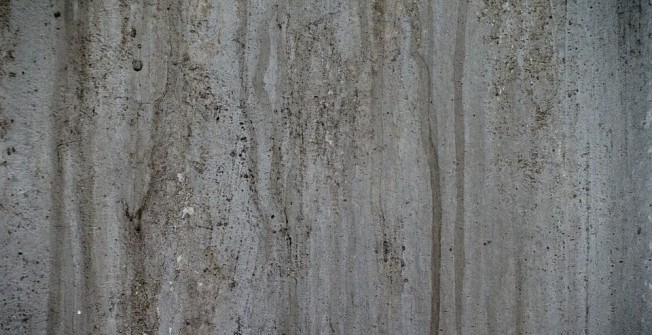
The price of damp treatment will vary depending on a number of factors including the size of the issue and how long the damp will take to clear.
Rising damp in Summerhouse DL2 3 is a common problem which many people will have come across in their homes, property or building. The issue with this dampness is that a person might see it in just one area and fix that area but it has normally been in the building for some time and this could have caused further problems such as rotting wood on the skirting boards or floor.
The longer you wait to treat the dampness to more problems it can cause and the more likely it will cost more to fix. There are many ways to prevent it happening and this is where our professionals can come in and explain the range of ways to stop this problem happening.
Rising damp is a form of dampness that occurs when moisture travels up through walls, causing damage to plaster, timber, and leaving visible stains and salt deposits behind. It is a silent enemy that can affect both older and newer properties, and if left untreated, may lead to more severe issues such as dry rot, wet rot, and black mold growth.
But how can you identify rising damp? Look for common signs such as a musty rising damp smell, damp stains on the ground floor walls, and fluffy white deposits on brick walls. By understanding the science behind rising damp and learning to differentiate it from other damp types, you’ll be better equipped to tackle this persistent problem.
Rising damp occurs due to capillary action, where water is drawn up through porous building materials like brick and mortar. This phenomenon can be likened to water being absorbed by a sponge when it comes into contact with a wet surface. When the moisture in the ground comes into contact with your property’s walls, it seeps through the brickwork and moisture rises upwards, causing visible tide marks and salt deposits on the walls.
The most effective form of protection against rising damp is a damp proof course (DPC), which acts as a barrier to prevent moisture from infiltrating your property. Consulting damp proofing specialists is crucial to ensure proper diagnosis and treatment of rising damp issues.
While rising damp is caused by groundwater and tends to affect the lower areas of walls, other damp types such as penetrating damp and condensation can manifest at any height. Penetrating damp occurs when water infiltrates a property from the exterior, whereas condensation is caused by humidity in the air.
Ground floor walls are particularly susceptible to rising damp due to their proximity to the ground, making it essential to have an effective damp proof course in place. By understanding the differences between rising damp and other damp types, you can ensure the correct diagnosis and treatment for your property.
Rising damp can be attributed to various factors, including the absence or failure of damp proof courses (DPCs) in older properties and environmental factors such as high water tables or poor drainage. Without an effective DPC, moisture from the ground can easily seep into the walls of your property, leading to damp issues.
Additionally, environmental factors like excessive rainfall or inadequate drainage systems can cause water to accumulate around your property’s foundation, exacerbating the rising damp problem. By addressing these causes and factors, you stand a better chance of preventing and controlling rising damp.
Older properties may lack a DPC or have a damaged one, allowing moisture to rise through the walls and cause rising damp. In some cases, the original DPC may have deteriorated or become compromised, rendering it ineffective in preventing dampness.
Bridging can also occur when the damp-proof course is disrupted due to external elements, such as increasing the external ground level above the DPC or an accumulation of debris and building materials in a cavity wall, which may affect internal walls and skirting boards.
In such situations, it is essential to identify the cause of the DPC failure and take appropriate remedial action to protect your property from rising damp.
Environmental factors that can contribute to rising damp issues include:
High water tables, which can cause water to permeate the walls of a building
Poor drainage, which can cause water to accumulate around the foundation of a building
Excessive rainfall, which can cause water to seep into the walls of a building, exacerbating the rising damp problem.
To reduce the risk of rising damp caused by environmental factors, it is essential to ensure that the property is adequately drained and that any water which accumulates around the foundation is removed. Additionally, it is important to seal any gaps or cracks in the brickwork to prevent water from entering the building.
Identifying rising damp involves looking for internal and external symptoms such as:
Tide marks
Peeling wallpaper
Salt deposits on walls
Damaged plaster near the skirting board
Swollen and decaying timber
Besides the telltale rising damp signs, such as damp patches and musty smell, these symptoms can indicate the presence of rising damp.
It’s crucial to accurately identify rising damp to ensure the correct diagnosis and treatment. If you suspect your property has a rising damp issue, don’t hesitate to consult a damp surveyor or specialist for a thorough inspection and assessment.
Internal symptoms of rising damp include tide marks on walls, damaged plaster, and peeling wallpaper near the skirting board. These signs are typically found on the ground floor walls, where moisture from the ground is most likely to seep into the property. You may also notice a damp, musty smell in the affected area, which can be a strong indicator of rising damp.
If left untreated, internal symptoms of rising damp can lead to more severe issues, such as dry rot or wet rot, which can cause significant damage to your property’s structure.
External symptoms of rising damp include tide marks, salt deposits, and green/brown staining on walls. These signs are usually visible approximately one meter from the base of the wall and can be an indication that moisture is seeping into your property, leaving a tide mark as evidence.
If you observe any of these external symptoms, it’s essential to take action and consult a damp specialist to accurately diagnose and treat the issue. Ignoring these signs can lead to significant damage to your property’s structure and potentially affect its value.
Health implications of rising damp include:
Respiratory issues
Allergies
Worsening of asthma symptoms due to damp and moldy environments
Nasal congestion
Cough
Wheezing
Aggravation of asthma and allergic conditions
Diminished lung capacity
Various chronic health issues
Prolonged exposure to dampness and mold can lead to these health problems.
By treating rising damp promptly and maintaining a dry, well-ventilated living environment, you can protect your health and the well-being of your loved ones.
Diagnosing rising damp requires a professional surveyor or damp specialist to accurately identify the issue and avoid misdiagnosis. Due to the similarities between rising damp and other damp types, such as penetrating damp or condensation, it’s crucial to ensure an accurate assessment is made.
By consulting a qualified and experienced damp specialist, you can ensure the correct treatment is chosen for your property, saving you time, money, and potential damage to your home.
Call a specialist if you notice signs of rising damp or if a pre-purchase survey suggests damp issues in a property you are considering buying or renting. A damp specialist can provide a thorough inspection and assessment of your property, ensuring an accurate diagnosis and recommending appropriate treatment options.
By consulting a specialist early on, you can prevent further damage to your property and avoid unnecessary expenses resulting from misdiagnosis or poorly executed treatments.
Misdiagnosis of rising damp is common due to the similarities with other damp types, such as penetrating damp or condensation. Inaccurate diagnosis can lead to unnecessary and costly repairs or leave the underlying issue unresolved, resulting in further damage to your property.
To avoid misdiagnosis, it’s essential to consult a qualified specialist with experience in damp-related matters, who can accurately identify the issue and recommend the most appropriate course of action.
Effective rising damp treatment options include damp proofing injection creams and damp proof membranes, which act as barriers to prevent moisture from infiltrating your property. Once the issue has been accurately diagnosed, a damp specialist can recommend the most suitable treatment option based on the severity of the issue and the specific needs of your property, following the rising damp treatment process to treat rising damp effectively.
By choosing the right treatment and carrying out necessary repairs and re-plastering, you can effectively resolve rising damp issues and protect your property from further damage.
Choose the right treatment for rising damp based on professional advice and the severity of the issue. A damp specialist will assess your property and recommend the most suitable treatment option, such as damp proofing injection creams or damp proof membranes.
It’s important to follow the specialist’s advice and ensure the treatment is carried out correctly to achieve the best results and prevent further damage to your property.
After treating rising damp, re-plastering and repairing damaged areas is essential to prevent further problems. Re-plastering helps to remove salt-contaminated plaster that can continue to draw moisture, while repairs ensure the integrity of your property’s structure.
By carrying out these post-treatment measures, you can ensure a thorough and long-lasting solution to your rising damp issue.
When buying or renting a property with rising damp, it’s crucial to ensure a professional rising damp survey is conducted and necessary treatments are carried out before finalising the deal. A damp survey can help identify any rising damp issues, allowing you to negotiate with the property owner or landlord for appropriate remedial action.
By addressing rising damp issues before buying or renting a property, you can protect your investment and avoid costly repairs in the future.
A pre-purchase damp survey can help identify any rising damp issues before buying a property, ensuring its long-term integrity and helping you avoid costly damp repairs in the future. These surveys are conducted by certified damp surveyors who specialise in detecting damp-related issues, such as rising damp, penetrating damp, or condensation.
By arranging a pre-purchase damp survey, you can have peace of mind knowing that your dream home is free from rising damp problems.
As a tenant, it’s your responsibility to notify the landlord of any suspected rising damp issues in the rented property. The landlord is accountable for addressing the issue and ensuring that appropriate damp proofing measures are in place.
By working together, tenants and landlords can effectively manage rising damp issues and maintain a healthy living environment for all occupants.
Preventative measures and maintenance can help avoid rising damp issues in your property, ensuring its long-term integrity and protecting your investment. Regular inspections and addressing environmental factors, such as high water tables or poor drainage, are key steps in preventing rising damp.
By being proactive and taking the necessary steps to maintain your property, you can safeguard against rising damp and enjoy a healthier, happier home.
Regularly inspect your property for signs of damp and maintain drainage systems to prevent rising damp. Keep an eye out for indications of dampness, such as discolored walls, peeling paint, and musty odors.
Ensure that guttering and roof tiles are regularly maintained and that the exterior of your property is inspected during maintenance checks. By staying vigilant and addressing any issues promptly, you can keep your property damp-free and in top condition.
Address environmental factors such as high water tables and poor drainage to reduce the risk of rising damp in your property. Ensure that your property is adequately drained and that any water accumulating around the foundation is removed.
Additionally, to effectively manage environmental factors and minimise the risk of rising damp, you should:
Ensure proper ventilation in the affected areas
Install a damp-proof course or membrane
Seal any gaps or cracks in the brickwork to prevent water from entering the building
By taking these steps, you can effectively manage environmental factors and minimise the risk of rising damp.
In conclusion, rising damp is a prevalent issue that can cause significant damage to your property and negatively impact your health. By understanding its causes and symptoms, accurately diagnosing the issue, and choosing the right treatment, you can effectively tackle rising damp and protect your property. Remember to be proactive with preventative measures and maintenance, and consult a damp specialist or surveyor when needed. Don’t let rising damp dampen your spirits or your home – take action and safeguard your property today.
Listed below are some of the most common questions regarding Rising Damp:
The best way to treat rising damp is by using a damp proofing injection cream like Kiesol C or Aida. This can be applied using complete kits or individual cartridges, injected or hand-pumped into holes in the mortar course.
Rising damp can be a serious problem, causing structural damage, damaging plaster, flooring and decorative finishes, as well as creating an unpleasant smell.
Treating it should not be neglected.
Signs of rising damp include efflorescent salts on external walls, damp sections of walls, flaking or bubbling plaster, a stale, mouldy, musty smell, and a damp tide mark around 1m up the wall.
These signs can be indicative of a serious problem, and it is important to take action to prevent further damage to the property. If left untreated, rising damp can cause structural damage, as well as health problems due to the presence of mould and mildew.
It is important to seek professional advice if you suspect that something is wrong.
Rising damp treatment is the most expensive among others, costing into thousands depending on the size and severity of the problem.
Replacing a DPC involves complex structural work, making it costly to fix.
To treat dampness in internal walls, use Dryzone Mould-Resistant Emulsion Paint. This paint is a simple and effective solution that will damp-proof walls from condensation for up to 5 years.
It is easy to apply and can be used on a variety of surfaces, including plaster, brick, and concrete. It is also highly durable and will not crack or flake over time.
To find out more information about rising-damp in Summerhouse DL2 3 and how our team of specialists can help resolve the problem, fill out the application form. We can also provide information on a range of damp proofing services.


